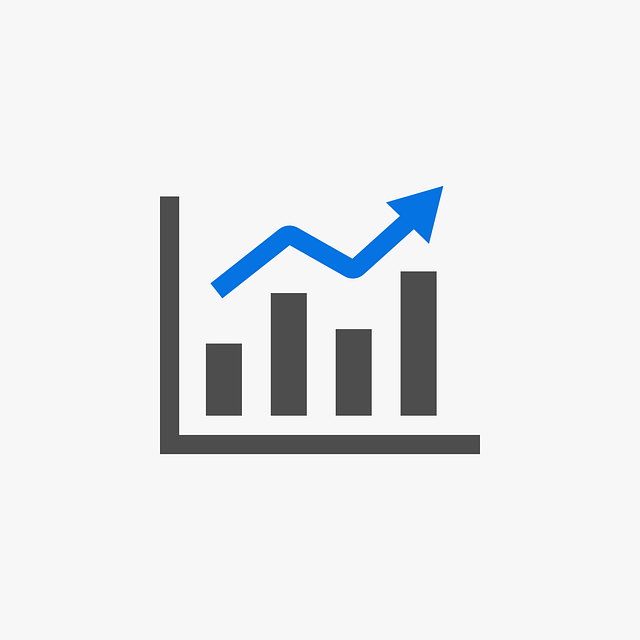Technical SEO is vital for boosting a website's search rankings by optimizing behind-the-scenes elements like navigation, loading times, mobile optimization, and secure connections. Key components include XML sitemaps, swift loading, mobile optimization, and HTTPS. On-page optimization involves enhancing title tags, meta descriptions, headers, content, images (with alt tags), and URL structures for better search engine indexing. Site speed and user experience are crucial drivers; faster sites signal quality to search engines and encourage engagement. Mobile responsiveness is essential in the mobile-first landscape, with responsive design strategies improving rankings and user interaction. XML sitemaps and Robots.txt files aid search engine crawlers in efficient indexing. Structured data markup provides rich snippets, enhancing visibility and click-through rates. Building high-quality backlinks through strategic content and technical optimizations improves authority and rankings. Optimizing images for size, file names, and alt tags improves crawlability and relevance. Regular site audits identify issues, ensuring prompt resolution for better site health, user experience, and search engine trust, ultimately leading to improved organic search rankings.
In today’s digital landscape, understanding Technical SEO is crucial for improving organic search rankings. This comprehensive guide delves into the essential components that form the foundation of your site’s visibility. From on-page optimization techniques to mobile-first indexing strategies, we explore key elements like site speed, structured data markup, and regular audits—all designed to enhance crawlability and boost your search engine rankings. By mastering these technical aspects, you can revolutionize your online presence and attract more traffic.
Understanding Technical SEO: The Foundation for Search Rankings

Technical SEO forms the bedrock upon which your website’s search rankings are built. It focuses on optimizing the behind-the-scenes aspects of your site, ensuring it’s easily accessible and crawlable by search engine bots. By improving these technical elements, you enable search engines to understand your content better, resulting in enhanced visibility and, ultimately, improved organic search rankings.
At its core, Technical SEO involves ensuring your website is structured logically with proper XML sitemaps, fast loading times, mobile-friendliness, and a secure HTTPS connection. These factors impact how search engine crawlers navigate and index your site, directly influencing your search rankings. A well-optimized technical foundation also reduces bounce rates and encourages users to engage more deeply with your content.
Key Elements of On-Page Optimization for Better Visibility

To improve organic search rankings, on-page optimization is a crucial element that cannot be overlooked. It involves enhancing individual web pages to rank higher and earn more relevant traffic from search engines. Key elements include optimizing title tags and meta descriptions for relevance and length, ensuring headers (H1-H6) are used hierarchically and descriptively, and crafting compelling, keyword-rich content that satisfies user intent.
Image optimization is another vital aspect, involving the use of alt tags to describe images accurately and reduce file sizes without compromising quality to speed up page load times. URL structures should be clean, readable, and include keywords when appropriate. Internal linking plays a significant role in distributing page authority throughout your site, helping search engines understand the context and importance of each page. Lastly, ensuring mobile-friendliness is essential as most searches are now conducted on mobile devices.
Impact of Site Speed and User Experience on Ranking Algorithms

In today’s digital era, site speed and user experience are paramount factors in search engine optimization (SEO) strategies, directly influencing ranking algorithms. Search engines like Google prioritize websites that offer fast loading times and seamless user interactions, as these indicators suggest a high-quality online environment. By optimizing elements such as page load time, mobile responsiveness, and website architecture, businesses can significantly improve their organic search rankings. Faster sites enhance user experience, encouraging visitors to explore more pages and interact longer, which signals to search engines that the website is valuable and trustworthy.
A positive user experience not only improves retention rates but also encourages backlinks and social shares, further bolstering a site’s SEO. Efficient coding, optimized images, and content delivery networks (CDNs) are some techniques to enhance site speed. Additionally, ensuring a mobile-friendly design caters to the majority of users who access websites via smartphones, improving accessibility and boosting rankings for mobile search queries. These strategies collectively contribute to a robust online presence, making sites more visible and credible in the eyes of search engines.
Creating a Mobile-First Index: Strategies for Responsive Design

In today’s mobile-centric world, search engines have adopted a mobile-first index, meaning they primarily use mobile versions of websites for ranking and indexing. This shift is crucial for businesses aiming to improve organic search rankings, as it ensures their website appears relevant and optimized for the majority of users. To adapt, implementing responsive design strategies is essential. Responsive design allows a website to automatically adjust its layout and content based on the device’s screen size, providing an optimal user experience across all platforms.
By adopting a mobile-first approach, website owners can ensure that their content is easily accessible and readable on smartphones and tablets, which are now the primary devices used for web browsing. This strategy not only satisfies search engine requirements but also fosters higher engagement rates as users interact with a user-friendly, visually appealing site. Ultimately, this translates into better search rankings, increased traffic, and a more successful online presence.
XML Sitemaps and Robots.txt: Effective Navigation for Search Engines

XML Sitemaps and Robots.txt files are essential tools for guiding search engines through your website’s structure, enabling them to efficiently crawl and index your pages. An XML sitemap provides a structured overview of your site’s content, including important details like page URLs, last update dates, and change frequency. This helps search engine crawlers understand which pages to prioritize during their regular updates.
Robots.txt, on the other hand, is a text file placed in your website’s root directory that instructs web crawlers on what pages or sections of your site they are allowed to access. It ensures that sensitive or duplicate content isn’t mistakenly indexed, thus avoiding potential ranking penalties. By effectively utilizing these two files, you can significantly improve organic search rankings by helping search engines navigate and understand your website’s unique value proposition more accurately.
Leveraging Structured Data Markup to Enhance Search Results

Structured data markup is a powerful tool for enhancing your website’s visibility and boosting its improve organic search rankings. By adding specific code snippets to your HTML, you provide search engines with detailed information about your content, helping them better understand what your pages are about. This structured format enables search engines to display rich snippets in the search results, which can attract more clicks and increase user engagement.
These rich snippets can take various forms, such as stars for ratings, prices, or even specific details about recipes or events. Implementing structured data allows you to stand out in a crowded search results page, making your website more appealing to potential visitors. It’s a strategic step towards optimizing not just the technical aspects of your site but also delivering enhanced user experiences that can lead to improved rankings over time.
Building High-Quality Backlinks: A Technical Perspective

Building high-quality backlinks is a cornerstone of any successful SEO strategy aimed at improving organic search rankings. From a technical perspective, this involves ensuring your website’s architecture and content make it easy for other sites to naturally link to you. User-friendly navigation, clear value propositions, and engaging, shareable content all contribute to creating opportunities for backlinks.
Technical optimizations like implementing structured data markup, optimizing site speed, and improving mobile usability also play a crucial role. These factors not only enhance the user experience but also signal to search engines that your website is authoritative and trustworthy. When combined with strategic outreach and partnership efforts, these technical SEO practices can lead to a robust backlink profile, ultimately bolstering your site’s position in search results and driving more qualified traffic.
Optimizing Images and Media for Improved Crawlability

Optimizing images and media is an essential step in enhancing a website’s technical SEO, which can significantly impact its organic search rankings. By ensuring that visuals are properly optimized, search engines like Google can more efficiently crawl and index your site’s content. This involves several techniques: compressing image sizes to reduce loading times without sacrificing quality, using descriptive file names and alt tags that accurately represent the image, and incorporating relevant keywords in these attributes.
Alt tags, in particular, play a crucial role as they provide text alternatives for visually impaired users and search engine crawlers when an image cannot be displayed. Incorporating targeted keywords into these tags can signal to search engines what the image is about, further improving crawlability and relevance for specific queries, ultimately leading to better search rankings.
Regular Site Audits: Identifying and Fixing Technical SEO Issues

Regular site audits are a cornerstone of effective Technical SEO strategies aimed at improving organic search rankings. These comprehensive assessments allow for the meticulous examination of a website’s technical aspects, identifying potential issues that may hinder visibility and performance in search engine results pages (SERPs). By periodically conducting these audits, businesses can proactively address problems such as broken links, crawl errors, site speed bottlenecks, and mobile usability concerns.
Early detection of these Technical SEO issues is vital because they can significantly impact a website’s ability to attract and engage users, as well as get indexed and ranked properly by search engines like Google. Prompt remediation not only enhances overall site health but also contributes to a smoother user experience, encouraging longer visits, lower bounce rates, and ultimately, stronger signals to search algorithms that the site is valuable and trustworthy—all of which are key factors in enhancing online visibility and driving higher organic search rankings.
